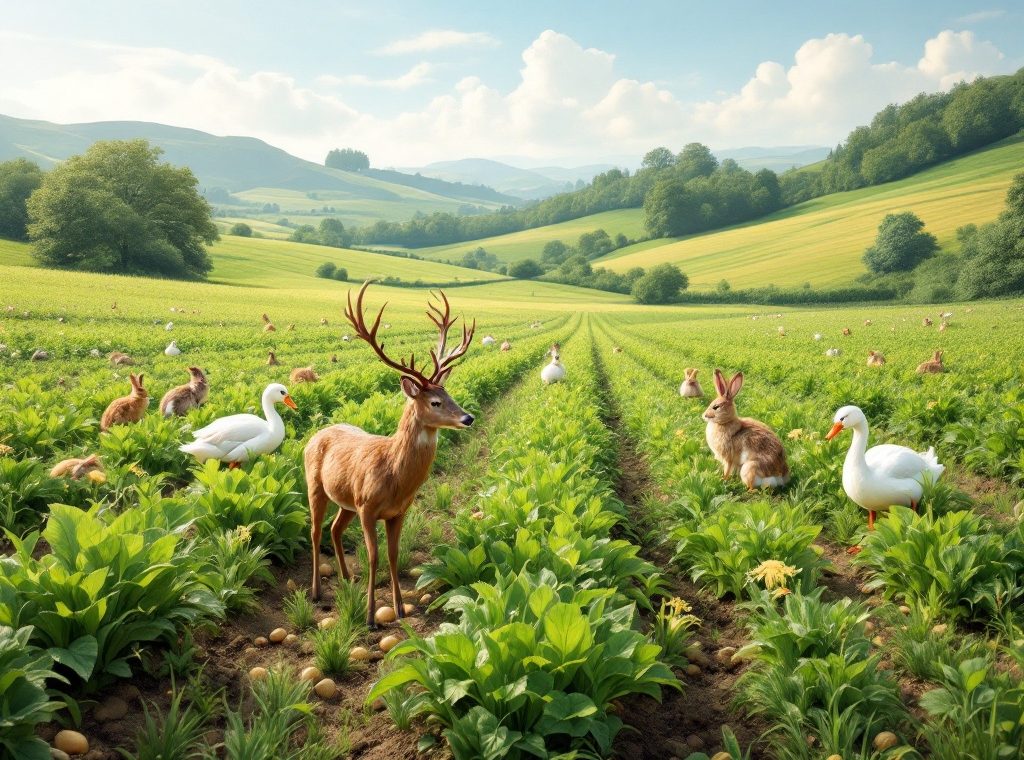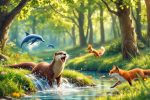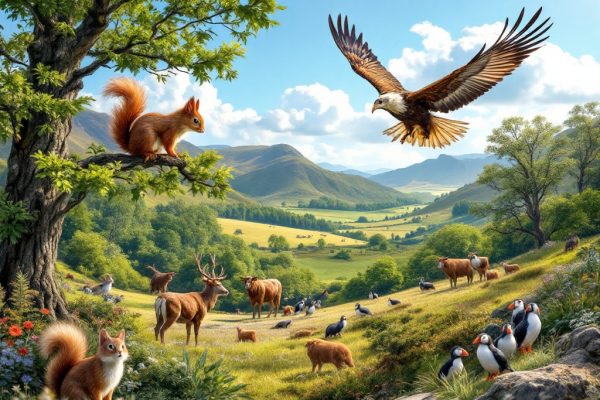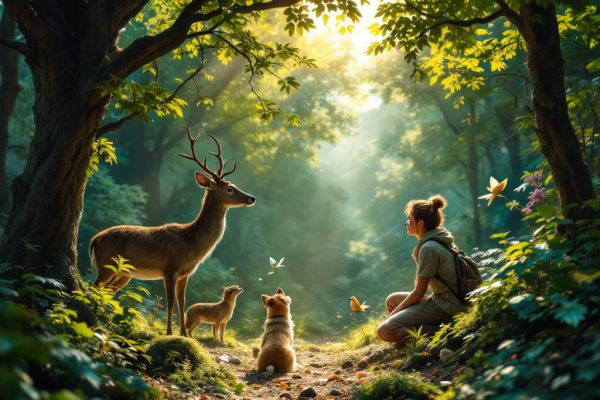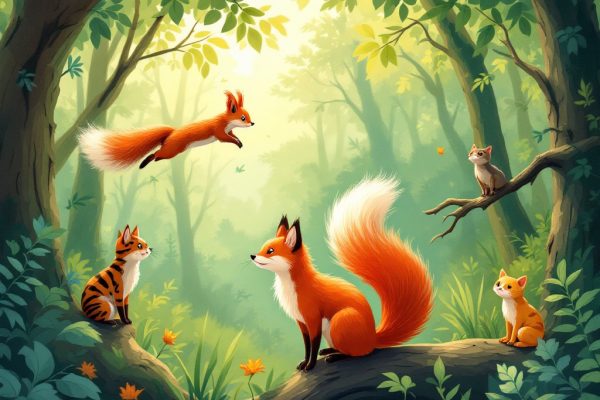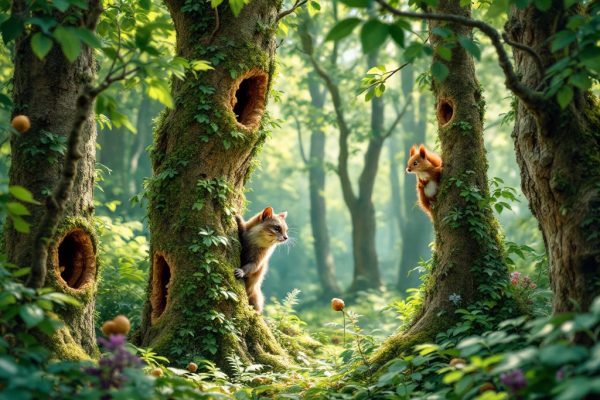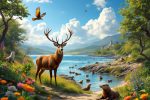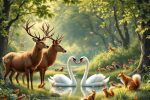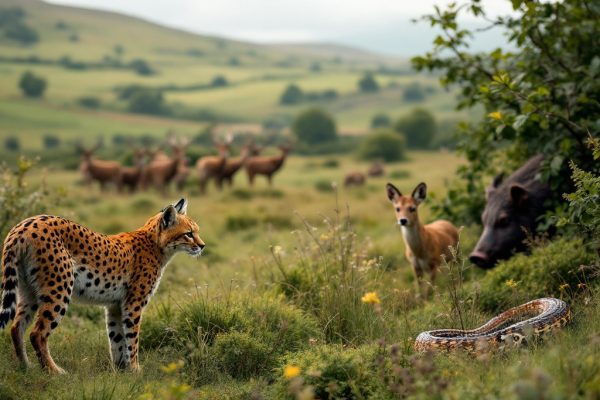Do Wild Animals in Lothian Eat Potatoes?
Discover the surprising role potatoes play in the diet of Lothian’s wildlife! From deer and rabbits to mallards and even whooper swans, many animals supplement their diets with this starchy crop, especially when other food sources are scarce. Learn how farming practices, climate change, and animal adaptability impact this complex relationship, and explore the crucial balance between agriculture and conservation in Lothian’s ecosystem. Delve into the fascinating research by the Scottish Agricultural College and explore the long-term effects of this dietary trend. Read on to uncover the full story!
Important information
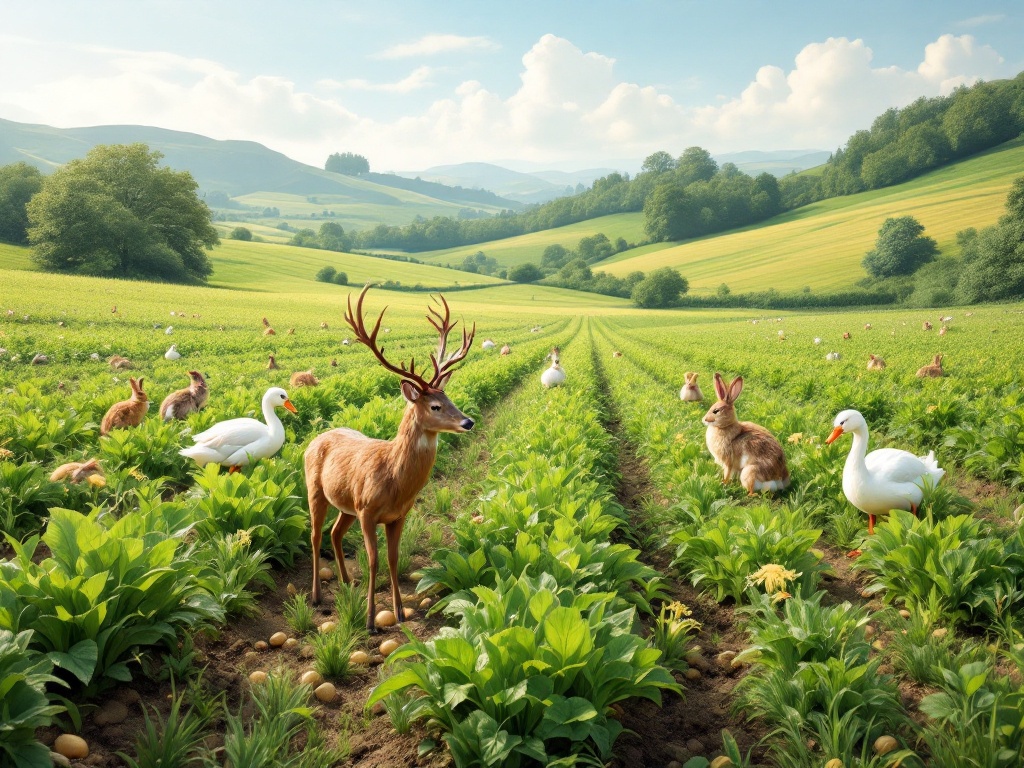
- Many wild animals in Lothian, including deer, rabbits, rodents, and some birds, eat potatoes, especially when other food is scarce.
- Several bird species, like mallards, geese, and swans, have adapted to eating potatoes, with some relying heavily on them.
- Farming practices, such as large-scale potato farming, mechanical harvesting, and crop rotation, significantly influence how much wildlife eats potatoes and their ability to find them.
- While potatoes offer valuable nutrients, overconsumption can lead to dietary imbalances in wildlife; maintaining diverse food sources is crucial for their health.
- Balancing agricultural needs with wildlife habitat conservation is essential in Lothian to minimize human-wildlife conflict and maintain biodiversity.
Do Wild Animals in Lothian Eat Potatoes?
When food is scarce in Lothian, wild animals will readily consume potatoes from gardens and fields. This includes:
- deer,
- rabbits, and
- rodents.
Even some birds may partake of exposed tubers. While potatoes aren’t a primary food source, they supplement the typical diet of native wildlife. These animals primarily forage on:
- plants,
- fruits,
- nuts, and
- seeds.
Some species also include insects and small creatures in their meals. Dietary preferences vary considerably depending on the animal.
Wildfowl and Potato Consumption
Wildfowl are demonstrating remarkable adaptability by increasingly incorporating potatoes into their diets. This readily available farmland resource highlights the dietary flexibility of several species, showcasing their ability to thrive in changing environments.
Mallard: Early Adopters of Potato Diet
British mallards made history as the first wildfowl to develop a taste for potatoes. For over a century, these ducks have enjoyed this starchy snack, beginning in Scotland where they discovered discarded potatoes in harvested fields. This marked the beginning of a new dietary staple for the mallard population.
Pink-footed Geese: Adapting to a Potato Diet
Pink-footed geese in Lancashire adopted potatoes as a food source about thirty years after Mallards discovered their nutritional value. This demonstrates their remarkable adaptability and ability to exploit new food resources.
Scottish Greylag Geese: Recent Potato Consumers
Scottish Greylag geese have recently incorporated potatoes into their diet. This dietary shift contrasts with other wildfowl species, which adapted to similar changes much earlier.
Whooper Swans: Potato Fields in Autumn
Whooper swans depend heavily on potatoes, foraging in fields, particularly during the autumn months in Perthshire and Angus. This highlights their increasing reliance on agricultural land for sustenance.
Other Wildlife Consuming Potatoes
Wild boars add potatoes to their diverse menu, showing a particular fondness for them.
Field mice enjoy small bites of these starchy tubers.
Raccoons, known for their scavenging habits, dig up potatoes.
Even white-tailed deer occasionally graze on potato plants, which can, unfortunately, harm crops.
Wild Boars: Potato as Part of Their Diet
Wild boars are opportunistic omnivores, consuming a wide variety of foods depending on availability. For example, they often raid farmlands for potatoes.
Field Mice: Small Rodents with a Taste for Potatoes
Field mice in Lothian supplement their diet with potatoes from local farms, demonstrating how agriculture supports small animals. This opportunistic feeding highlights the diverse species interacting with crops and may even benefit the mice. The potato fields provide a valuable food source, ultimately illustrating agriculture’s impact on Lothian’s ecosystem.
Raccoons: Scavenging for Potatoes
Raccoons are clever scavengers that often raid gardens and farms for potatoes. This adaptability to human environments highlights their resourcefulness, as they exploit any available food source. Consequently, these resourceful critters are a familiar sight in urban areas.
White-Tailed Deer: Potato Consumption and Crop Impact
White-tailed deer develop a fondness for potatoes, especially when other food sources are scarce. This preference poses significant challenges for potato farmers, as the deer’s grazing habits can damage crops and reduce harvests. They consume the leafy plants and dig up the potatoes. Farmers can mitigate these losses through protective measures like fencing and repellents, thus preserving their yields.
Factors Influencing Potato Consumption
Large-scale potato farming significantly impacts wildlife feeding patterns, providing a plentiful food source. This is particularly vital during harsh winters when natural food sources are scarce, leading animals to depend on potatoes for sustenance.
Mechanical harvesting leaves potatoes scattered throughout the fields, making them easily accessible to wildlife. However, crop rotation disrupts this readily available food supply, forcing animals to find alternative sources.
Agricultural Changes and Food Sources
Farming practices significantly influence the diets of wild animals. Crop rotation alters the available food sources, while modern harvesting techniques leave less behind. For instance, pink-footed geese, which once relied on leftover potatoes, now face scarcity and must adapt by seeking alternative food sources. Other agricultural changes further compound these dietary challenges for wildlife.
Climate Factors and Foraging Behavior
Climate change is disrupting potato farming and wildlife foraging. Altered temperatures and rainfall patterns decrease potato yields and impact the natural food sources of wild animals. This often leads animals like geese and swans to rely more heavily on potatoes, especially during food shortages or severe weather. For example, milder winters may alter migration patterns, causing geese to linger in Lothian and consume more potatoes. Similarly, droughts diminish natural food availability, making potatoes a desirable alternative. This complex relationship between climate change, agriculture, and animal behavior has been studied by the Scottish Agricultural College, specifically exploring these climate-driven interactions between crops and wildlife in Scotland.
Mechanical Harvesting and Crop Rotation Effects
Mechanical harvesting minimizes potato waste, reducing leftover food sources for local wildlife. Crop rotation further limits this availability. When potato fields lie fallow, animals must adapt and seek sustenance elsewhere. This can ultimately reshape both the population size and distribution of various species in Lothian.
Impact on Lothian’s Ecosystem
While potatoes serve as an easily accessible carbohydrate source for wildlife, overconsumption can disrupt nutritional balance. A diverse diet is crucial for their well-being.
Potato crops often become a target for animals like geese and swans, especially during harvest, leading to potential overgrazing.
In Lothian, potato farming impacts wildlife habitats, emphasizing the importance of balancing agricultural needs with habitat conservation.
This equilibrium is vital for preserving biodiversity and minimizing adverse effects on native species.
Nutritional Value and Wildlife Health
Potatoes provide wild animals with a significant source of carbohydrates, along with essential vitamins such as C and B6, and minerals like potassium and manganese. These nutrients offer a powerful energy boost, strengthen the immune system, and improve overall health. For example, studies show that wild boar who eat potatoes have increased reproductive success, likely due to the nutritional advantages. However, too many potatoes can cause dietary imbalances. A varied diet is still essential for optimal health, and the wildlife of Lothian thrives on a range of natural foods beyond just potatoes.
Adaptability and Feeding Habits
Lothian’s wildlife demonstrates remarkable adaptability by incorporating potatoes into their diet. This showcases how species respond to changing food resources. Research indicates leftover potatoes have become a crucial, easily accessible food supply for these animals, underscoring the connection between wildlife behavior and agricultural practices. However, further investigation is needed to explore the long-term consequences of this dietary shift. Scientists must determine the impact on wildlife populations and overall ecosystem health.
Conservation and Habitat Considerations
Lothian’s wildlife, particularly drawn to potatoes, creates a significant land management challenge. Balancing agricultural needs with habitat preservation is crucial, especially protecting natural food sources.
Reducing wildlife dependence on crops like potatoes promotes biodiversity and strengthens the overall ecosystem. Understanding animal diets informs sustainable farming practices and targeted conservation efforts.
Creating buffer zones and wildlife corridors helps minimize human-wildlife conflict. These strategies foster peaceful coexistence, allowing both agriculture and wildlife to thrive. This approach ensures the long-term health of the ecosystem while supporting local farming practices.

